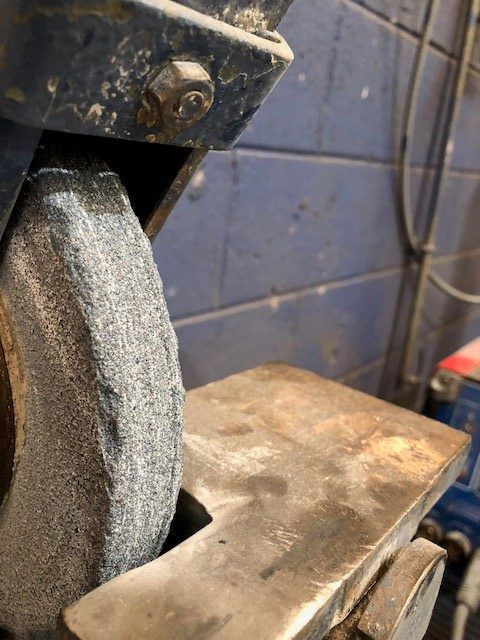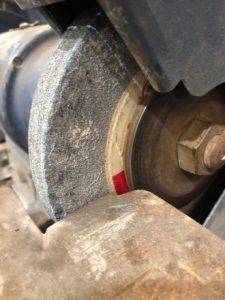
18 Apr Using Damaged Abrasive Wheels & Wheel Breakage
Using damaged abrasive wheels accounts for a large proportion of wheel breakages when using cutting and grinding equipment.
The sudden and catastrophic breakage of an abrasive wheel can lead to serious life changing injuries and in some cases even death, also these breakages can cause significant damage to the machine, the work piece and other valuable equipment.
Abrasive wheel manufacturers take all reasonable precautions, including speed tests, to supply sound wheels, and various methods are used in their construction to reduce the risk of breakage.
These include:
(a) Fibre reinforcement: This is normally a resin-coated, woven, glass-fibre mat used in organic wheels (resinoid and rubber bonded) for heavy-duty grinding and cutting operations. It allows the wheel to withstand high stresses and helps to contain fragments if the wheel breaks in use;
(b) Steel rings: These are moulded into the wheel close to the bore and are designed to retain wheel fragments if breakage occurs when the wheel is near to throwaway size. They can also be used to prevent excessive wear on the
wheel;
(c) Safety inserts: These are threaded nuts incorporating locking teeth and form part of a plate which strengthens the base of a cup wheel used for portable grinding. They serve merely as an additional safety device and may not replace
the guard;
(d) Tapewinding: Adhesive tape, glass-fibre or metallic wire may be used to strengthen thin-walled cup and cylinder wheels. In the event of breakage, they help to hold the fragments together;
(e) Fine grit centre or similar: A fine grit centre is placed around the bore to increase the strength of a vitrified grinding wheel. The centre is moulded together with the wheel. The bore area may also be impregnated by epoxy
resin to increase the strength of the wheel. These two types of reinforcement are used for wheels operating at 63 m/s to 125 m/s.
In spite of these precautions breakage may occur in service due to a defect caused by subsequent misuse or handling, bad storage, incorrect selection of a wheel, improper mounting, excessive out-of-balance conditions, excessive speed, grinding machine defects, and malpractices in the grinding operations are all factors that can result in breakage. (source HSG17).
The photograph below clearly shows what can happen to a grinding wheel if one or more of the points above have gone wrong, but that wheel would have been in that condition for a long time before I arrived on site and ultimately if the company would have had systems in place to ensure that the machines are checked on a daily basis this would have been picked up long before the wheel had got into this dangerous condition.

The simple checklist below will help you eradicate a lot of the problems that you may encounter with abrasive wheels:
CHECKLIST – ABRASIVE WHEELS
1. Have you informed and adequately trained those involved in the use, mounting, supervision of persons to mount abrasive wheels?
YES/NO
2. Have you recorded relevant details of the above training and distribution of information, instructions, etc.?
YES/NO
3. Do you have a procedure/system for maintaining your grinding machine?
YES/NO
4. Do you keep records of maintenance/inspections of machines?
YES/NO
5. Do you provide and maintain suitable eye protection/shields/dust protection?
YES/NO
6. Do you provide suitable storage for abrasive wheels?
YES/NO
7. Do you check that safety precautions are being observed?
YES/NO
The photographs in this blog were taken on site by us and unfortunately this is not an isolated incident we see this on a regular basis, it is the simple things that make the biggest difference when it comes to using abrasive wheels safely. Find out details of our abrasive wheel training here.



No Comments